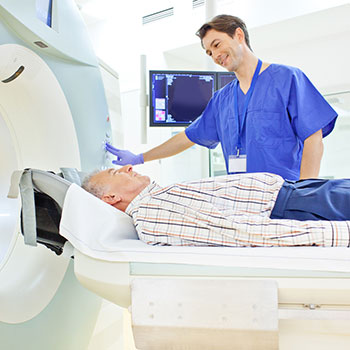Lung cancer is a leading cause of cancer deaths. One reason is that the signs and symptoms don’t present themselves until the disease has already progressed. By taking advantage of low-dose CT lung cancer screenings, high-risk patients can reduce their chances of dying from lung cancer by as much as 20%.
Screening eligibility requirements
Under the Medicare and Medicaid guidelines, a patient must meet the following criteria:
- Be between the ages of 55 and 77
- Be asymptomatic of lung cancer
- Have a tobacco smoking history of at least a one pack per day for 30 years or 2 packs per day for 15 years
- Be a current smoker or former smoker who has quit within the last 15 years
Patients who satisfy the eligibility requirements will meet with a qualified health professional for a lung cancer screening counseling session. The session is designed to result in a share-making decision about the patient’s upcoming test results.
If anything suspicious is found, the patient and healthcare professional will develop a treatment route to pursue. If it comes back normal, there’s always the recommendation that the patient continues to get the scan on an annual basis until they no longer meet the eligibility requirements.
What happens during the screening test?
The test itself is quite simple. It’s essentially a chest CT-scan that does not require any preparation. After answering a few screening questions, the patient will lay down on the scanner and hold their breath for ten seconds during the scan. There is no IV or contrast administration needed.
The screening is a significant benefit to the patient. Although they’re considered high risk due to their lifestyle, they’re also asymptomatic at the moment. In the event of a positive result, the identification of lung cancer at any stage before it shows signs or symptoms offers the patient a higher chance of survival.
Patient and Facility Benefits
The benefit to the patient and the effect on their survival rate are most important, but there are additional benefits to the facility that provides the screening service. As they continue to serve the community and identify people early in their cancer journey, the facility is continually establishing themselves as a lung cancer treatment center.
The earlier a patient begins treatment, the higher their survival rate…and the better the statistics for the hospital. In the age of Google, when families are searching for a treatment facility, those with higher survival rates will be looked upon more favorably.
It also provides a financial benefit for the facility. From a business perspective, the lung cancer screenings and diagnostic CTs don’t generate a tremendous amount of revenue, but the treatment, radiation therapy, surgery, and chemotherapy utilize a broad spectrum of services at your facility.
Outsourced CT Imaging
If your facility is reaching maximum capacity for CT imaging, or does not currently offer on-site CT, there is the option of outsourcing it to a mobile provider like DMS. As an extension of your facility, DMS can provide their state-of-the-art equipment at your location to perform the screenings and ultimately complement your efforts.
It’s a worthwhile service for your patients and the community, and it financially supports your organization without putting the extra burden on your staff. For more information on DMS and how they can help support your efforts, visit their website.




